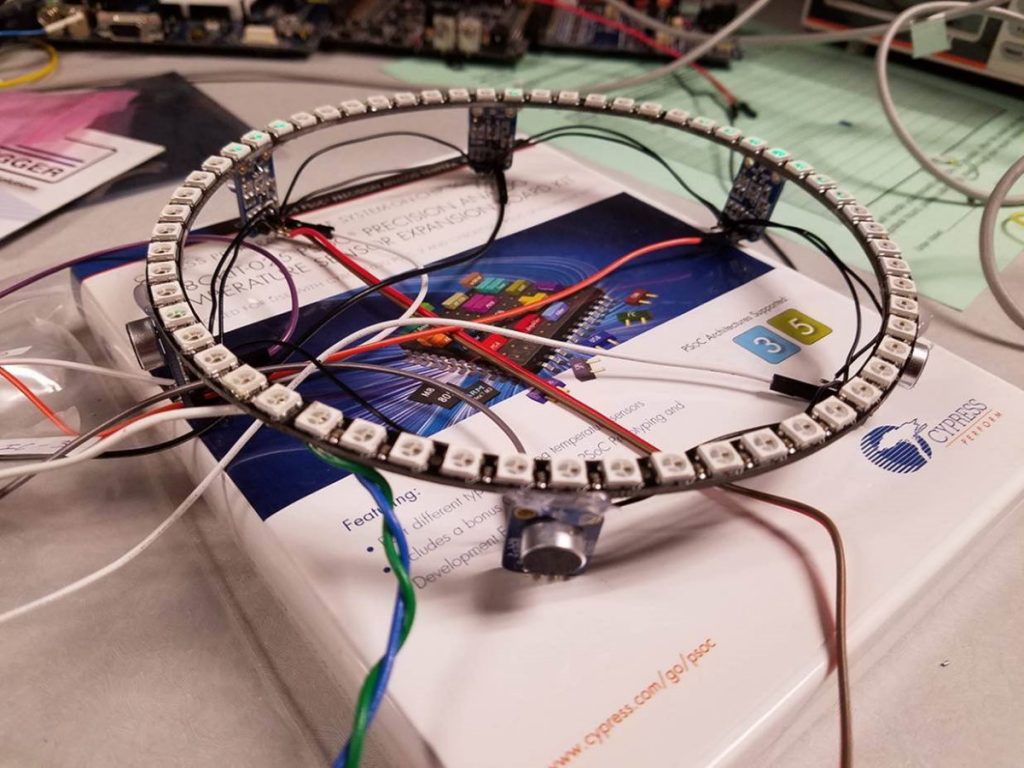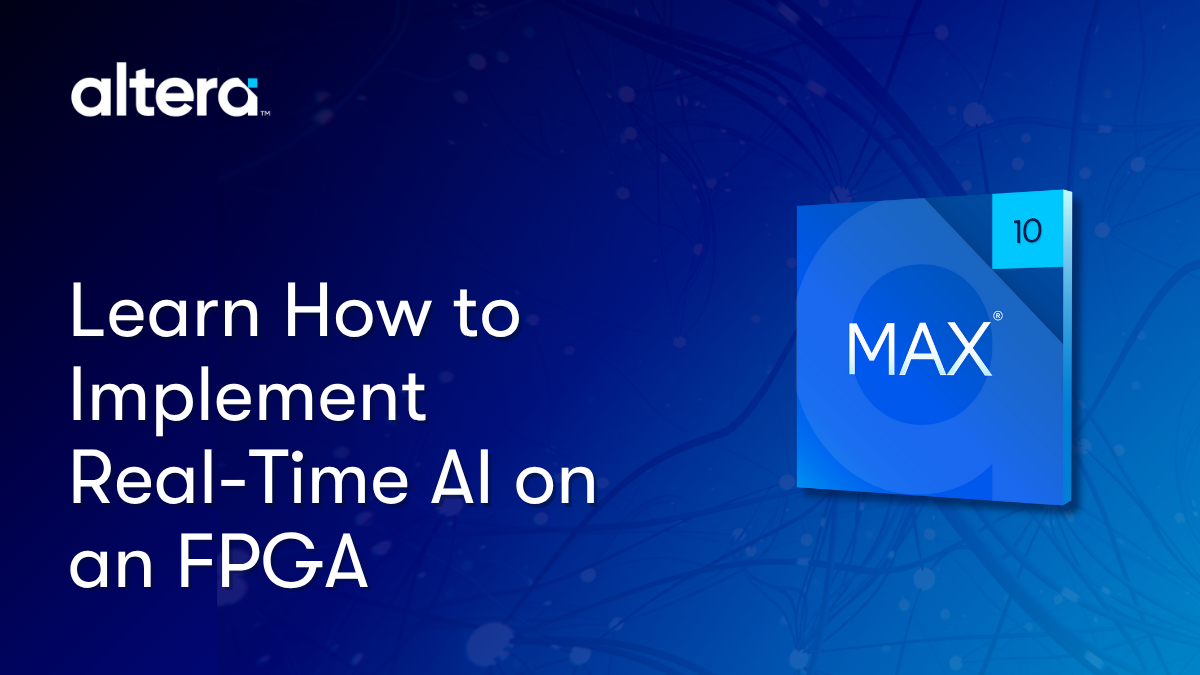I’ve often been moved to say that I don’t have many regrets in my life. I even used to believe this myself, right up until I read The Midnight Library by Matt Haig. Now I’m discovering regrets I never even knew I had. Although this may not appear to be a ringing endorsement, I’m actually a huge fan of this book. The fact that it has a 4.3 out of 5-stars with over a quarter of a million ratings certainly tells us something.
Do you remember my mentioning my friend Adam Taylor in my recent There’s More Than One Way to Become an Engineer column? To be honest, my biggest regret involves Adam. In a conversation that took place shortly after Bitcoin first appeared on the scene, Adam noted that we both had piles of FPGA-based development boards sitting in our offices staring at us and making us feel guilty. This is because, once you’ve reached a certain level of notoriety, no matter how much you beg them not to, FPGA companies feel moved to send you their latest and greatest development boards in the hope you’ll do something interesting with them and then write about what you’ve done.
Adam suggested we used our boards to mine Bitcoins. In this context, “mining” involves executing a computationally intensive algorithm. Mining Bitcoins was much easier in the early days than it is today. This is because, as each Bitcoin is mined, it makes the next one harder to extract (calculate). I responded that it would probably take us a week of our time to get everything up and running. Also, this didn’t seem to be worth our while on the basis that Bitcoins were worth only a few cents each and there didn’t seem to be a realistic chance they would go much higher. Adam reluctantly agreed, and we turned our attention to other things. Who would have guessed that, as reported by Statista, the value of a single Bitcoin (BTC) would one day pass the $70,000 mark?
Arrrgggggghhh!!! (And I say that most sincerely.)
Since I’m now feeling a mite maudlin, another regret I recall is not getting to experiment with programmable system-on-chip (PSoC) devices from Cypress Semiconductor, which was acquired by Infineon Technologies in 2020, thereby making Infineon one of the world’s top 10 semiconductor companies.
It’s my own fault. I had every opportunity (I still do, now that I come to think about it). As I discussed in my Modus Toolbox ML, TinyML, and the AIoT column, way back in the mists of time when I was writing for EETimes.com, Embedded.com, and EEWeb.com, I used to pen “Wouldn’t it be fun to build…” columns on Friday afternoons to give readers something to think about over the weekend.
Invariably, Sree Harsha Angara, who was an application engineer (AE) with Cypress Semiconductor at that time, would whip up a working PSoC-based example of my suggested project over the weekend.
As part of one such project—building a brain (well, a three-dimensional network of simple neurons)—for example, I suggested that it would be nice to have a ring of six microphones around the bottom of the brain. In addition to stimulating the brain as one of its sensory inputs, these microphones could be accompanied by a ring of tricolor LEDS, which could be used to indicate the source of the sound (similar in concept to the top of an Amazon Echo or Amazon Dot).
You can only imagine my surprise when I came to work the following Monday to find an email with pictures of a working PSoC-based solution sitting in my Inbox (I think this one earned Sree the “Cypress Maker of the Month” award).

A ring of 60 tricolor LEDs with six microphones, all powered by a PSoC (Image source: Sree Harsha Angara)
The reason for my waffling here is that I was just chatting with Steve Tateosian, who is SVP of consumer IoT and industrial microcontrollers at Infineon. Steve reminded me that he spoke at RT-Thread’s 2024 Global Technology Conference earlier this year (I was the host and moderator for that virtual event). At that time, Steve spoke about the PSoC Edge offerings, as seen to the right of the image below.

PSoC Control forms part of Infineon’s extensive MCU portfolio (Source: Infineon).
However, the reason for our chat (and this column, of course), is that, to complement the PSoC Edge (Exx) devices, which are on the high-end of the performance curve, Infineon recently introduced the first members of their PSoC Control (Cxx) offerings, which occupy a middling position performance-wise. As highlighted in the middle of the image above, these new devices—all of which boast a 32-bit Arm Cortex-M33 processor—are classed as C3 Entry, C3 Main, and C3 Performance.
These new PSoC Control devices can be used to enhance the precision and performance of motor control and power conversion applications. They are targeted at things like home appliances (air conditioners, washing machines, refrigerators…), smart homes (robotic vacuum cleaners, robotic lawn mowers, robotic pool cleaners, cordless gardening tools…), industrial automation (general-purpose drives, servo drives, service robots, automated guided vehicles…), renewables (solar inverters, EV chargers, light electric vehicles…), and server and telecom applications (telecom PSUs, Server PSUs, Workstation PSUs…).

PSoC Control devices enhance the precision and performance of motor control and power conversion (Source: Infineon)
These bodacious beauties deliver on-chip functionality to optimize and accelerate the current measurement, waveform generation, and real-time performance operations that play a critical role in their target system applications.
Of particular interest for these motor and power applications is that PSoC Control devices are classed as “WBG Ready,” where WBG stands for wide bandgap semiconductors, such as gallium arsenide (GaN) and silicon carbide (SiC). WBG devices operate at higher switching frequencies than their silicon counterparts, which drives new requirements into the devices that control these systems. Operating at higher switching frequencies is more efficient for power conversion and motor control. The consumer (end user) experiences this in terms of smaller power supplies, smoother motor operation, and cooler systems.
What’s not to love?
What? You want some nitty-gritty details? Well, key specifications of the new PSoC Control family include clock speed of up to 180MHz, high-performance analog-to-digital converters (ADCs), high-resolution (<100ps) pulse-width-modulation (PWM), and an integrated CORDIC accelerator to off-load real-time control tasks from the CPU. The CORDIC’s true synchronous “idle” sampling of up to 16 analog signals from the single core ADC is up to 25 percent faster without sampling jitter. This powerful combination of power and performance yields system-level bill-of-material (BOM) savings, while the <10µA deep sleep and <1µA hibernate modes deliver valuable energy savings for low-power and battery-driven applications.
Steve tells me that the first members of the PSoC Control family—with CPU clock speeds of 100MHz and 180MHz and up to 256KB embedded flash—are now available for early access customers, with full market availability in Q1 2025.
There is, of course, a cornucopia of development boards to accompany these new PSoCs. I really, really want to have a play with these devices but—as usual—it’s a case of “So much fun stuff to do and so little time to do it all in” (sad face). I’m too young for all this excitement. What say you? Do you have any thoughts you’d care to share on any of this?






“…They are targeted at things like home appliances …that play a critical role in their target system applications ”
Wow! Could these be used with the “Hofstadter-Moebius Loop” logic system that operates my fully-automated, Trebuchet (that fires GPS-drone aimed, canard-guided projectiles made of FRP inside red Georgia clay, and shaped to look like a full-sized, 1955 Buick Roadmaster)?
Just uh, asken, cause the current AI combat-controller has gotten way too combative to program…
Dr. Sigismund Odin Smythe, OBE, GED, DBS (retired)
“Wow! Could these be used with the “Hofstadter-Moebius Loop” logic system that operates my fully-automated, Trebuchet (that fires GPS-drone aimed, canard-guided projectiles made of FRP inside red Georgia clay, and shaped to look like a full-sized, 1955 Buick Roadmaster)?”
Well, Duh!
You wax eloquent as always my friend, on what, “…tis a consummation devoutly to be wish’d…”.
I shall therefore send a “slightly evil” minion (Operations and Maintenance),to you to ring out further details (all the really evil minions (Design), are required by law to remain in California – working on further, “…enterprises of great pith and moment…”).
“The Doctor”